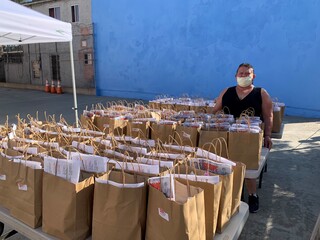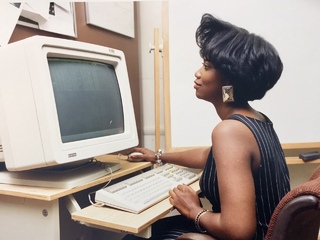When some people go hiking, it’s so they can escape to the “pleasure in the pathless woods” (as Lord Byron put it).
But for a carbon cycle scientist, walking through a forest means they haven’t quite left their work behind.
That’s true for Akihiko Kuze from Japan. He’s been to forests all over the world – visiting the tropical rainforests, testing technology on the quiet wooded slopes of Mt. Fuji, and wonderstruck beneath majestic trees in Alaska. He relishes the beauty – but his scientific mind is also at work. He wonders:
How much carbon dioxide do these forests soak up?
Do the younger trees consume more carbon than the older ones?
Do the beech trees consume more than the cedars?
Amazingly, despite the emphasis on forests as a way to combat climate change, the questions that Kuze asks himself are things we actually still don’t know. For decades now, scientists have been trying to improve our tabulations of how much carbon dioxide different countries emit, and how much carbon sinks like forests absorb. On the forest side, at least, there’s still a long way to go. Instruments on the ground simply can’t capture the enormity of the area that needs to be measured.
So, about three decades ago, scientists like Kuze started wondering: Can we measure all this using satellites in space? Their questions have since borne fruit. Scientists from NASA's Jet Propulsion Laboratory (JPL) and other space agencies around the world have successfully placed satellites in orbit helping to answer these questions. How did it all get started?
Trial-by-fire experiments
Julia Marshall stumbled into this line of work in the mid-2000s when she moved to Germany and started working at a research institute. She’d finished up her degrees in Canada and had thought, “Oh, why not go live in Europe for a while.” Through curiosity and some luck, she got involved with one of the earliest attempts to measure atmospheric carbon dioxide from space: a European satellite sensor called SCIAMACHY. It was a trial-by-fire experiment.
“The SCIAMACHY data weren’t perfect,” Julia says. “There was lots of fuzziness and the sensor wore down over time. A lot of what we did was to describe what was wrong with the data.” But by doing so, they were able to come up with possible pathways for improvement. “It was clear the sensors would only get better, not worse. And the fact that the satellite returned data from the whole world was incredible.”
Kuze, who worked for the Japanese space agency JAXA for over 20 years, remembers this period well. “In those early days, people didn’t believe it was possible to measure carbon dioxide from space.” So when he was put in charge of developing JAXA’s carbon-monitoring satellite in 2003, he knew he had his work cut out for him. The earliest step was making jaunts up Mt. Fuji, Japan’s highest peak roughly two hours from Tokyo, with a technician in order to test out future satellite sensors. “We would climb as far as my car could go, to the end of the road.” Their tests seemed to bode well. But making the leap from sensors on a mountaintop to sensors out in space would still be a huge challenge. So Kuze did what seemed the most sensible thing: he reached out to others for mutual help.
At the same time that Kuze and his JAXA team were starting work on GOSAT, a similar mission had started up at NASA's Jet Propulsion Laboratory. David Crisp had just put together the Orbiting Carbon Observatory (OCO) team. He and Kuze were soon in close touch. The OCO team would visit Japan one year, with their instruments in tow, and the JAXA team would visit JPL the next with their own precious bundles of brass and steel. One year, Kuze would host everyone at his home; the next, Dave was showing off his favorite restaurants in Pasadena. Yasjka Meijer, who is part of the European Space Agency and got to observe the JPL-JAXA collaboration, was impressed. “It was never a competition,” he remembers. “It was always about countries inspiring each other to be better.”
Partnerships under desert stars
One of the best expressions of the partnership, Kuze says, was the summers in the early 2010s when everyone on the JPL and JAXA teams gathered together in the “hot, hot, crazy hot” Nevada desert. It was a flat area that reflected light well, and for those reasons, it was perfect for testing out Japan’s GOSAT satellite, just launched into the infancy of its orbit around Earth. They were verifying that the newly received GOSAT data matched measurements taken on Earth, from all angles. “JPL would rent a big truck and camping equipment,” Kuze remembers, since the area had no facilities whatsoever. The leader of the JPL team, Carol Bruegge, would cook delicious food for everyone over a camp stove. Otherwise, the food options were limited. “There were only three restaurants in the closest town: a steakhouse, Chinese, and Mexican,” Kuze says. Some nights, they would spend hours over their meals, talking about their work but also swapping personal histories. Then, every morning, the first order of business was to dig the holes in the ground for the toilets. Kuze remembers that David Crisp was always the first to start digging the hole. “I was always very impressed by his leadership in this matter.”
The close cooperation of JPL and JAXA saved the day numerous times. It meant that when the devastating loss of the first OCO satellite occurred – falling into the ocean during launch – the JPL team was still able to pivot their efforts toward GOSAT. The shelter of this work allowed the JPL team to stay together until the second OCO satellite started development. In fact, JPL not only launched OCO-2, but also a few years later also sent OCO-3, a sister instrument, into orbit perched on the International Space Station,.
As Kuze says, “without the JPL collaboration, GOSAT would never have been as successful.” Things progressed to the point where JPL and JAXA could test the data from the other agency’s satellite with their own algorithms – and get the exact same results. This got the skeptics on board. “At that point, everyone started to believe that satellite monitoring from space was feasible and reliable,” says Kuze.
Now that GOSAT, OCO-2, and OCO-3 have proved it can be done, more carbon-monitoring satellites are in development. NASA, JAXA, and Europe’s Copernicus Programme all have important missions in the works that will dramatically increase the amount of data we receive about carbon dioxide in the atmosphere. The density and coverage of these satellites will make the puzzle pieces start to fit together: How much carbon are the forests soaking in? How much is each country emitting? Does the independent verification from satellites match the emissions that nations self-report?
And hopefully one day, when Kuze is taking in the magic of a forest, he’ll finally have answers to the questions running through his mind.
Two upcoming missions that will return more data on carbon dioxide from space than ever:
-
Europe's Copernicus Carbon Dioxide Monitoring Mission
This mission will consist of three satellites capable of collecting far more carbon dioxide data than we do today from space, and able to observe the entire world. Image credit: European Space Agency
-
JAXA's GOSAT-GW
Japan's space exploration agency is building the latest successor in their series of GOSAT satellites. GOSAT-GW will be a single satellite capable of operating in two modes. One mode will collect data globally, but with less details; the second mode will collect data only over certain locations, but with a great deal of detail. This second mode will be idea for observing cities. Image credit: National Institute of Environmental Studies, Japan






